Custom Circuit Boards and vibrating helmets
These days we can often get off-the-shelf sensors and controllers for small electronic projects and prototyping, and sometimes we have to build what we need from scratch. In many cases, due to time or budget constraints, it’s best to use a combination of the two.
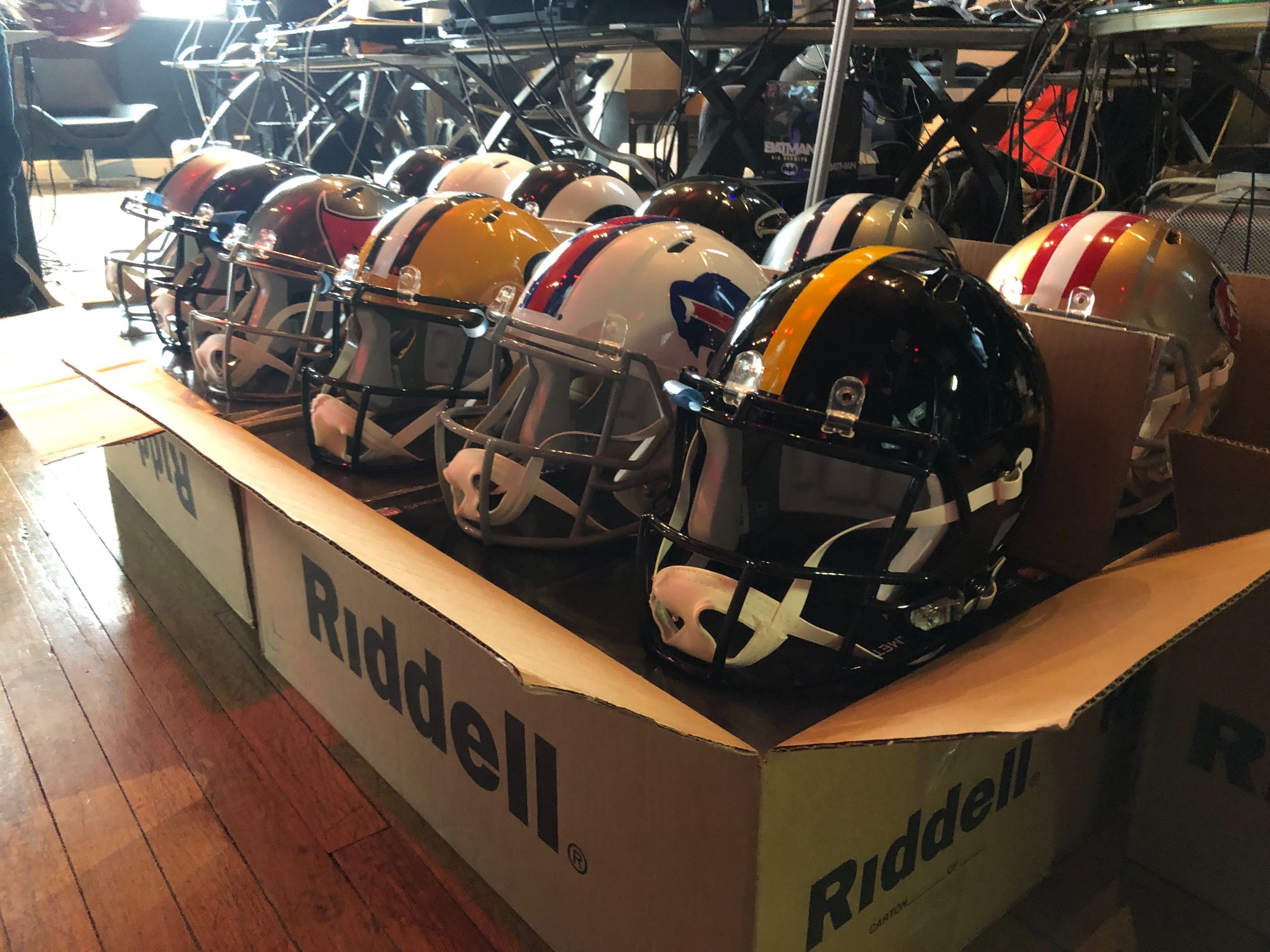
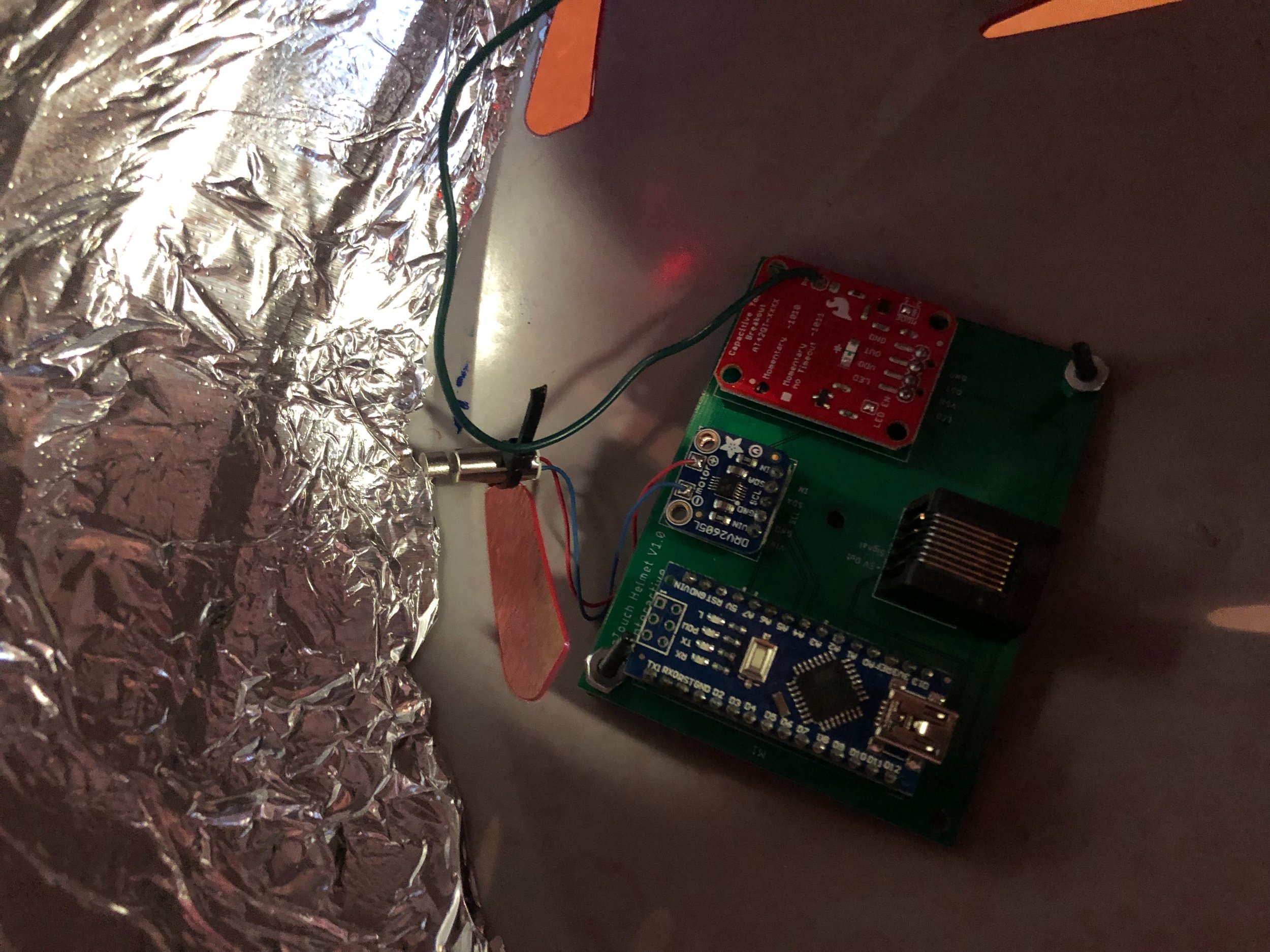
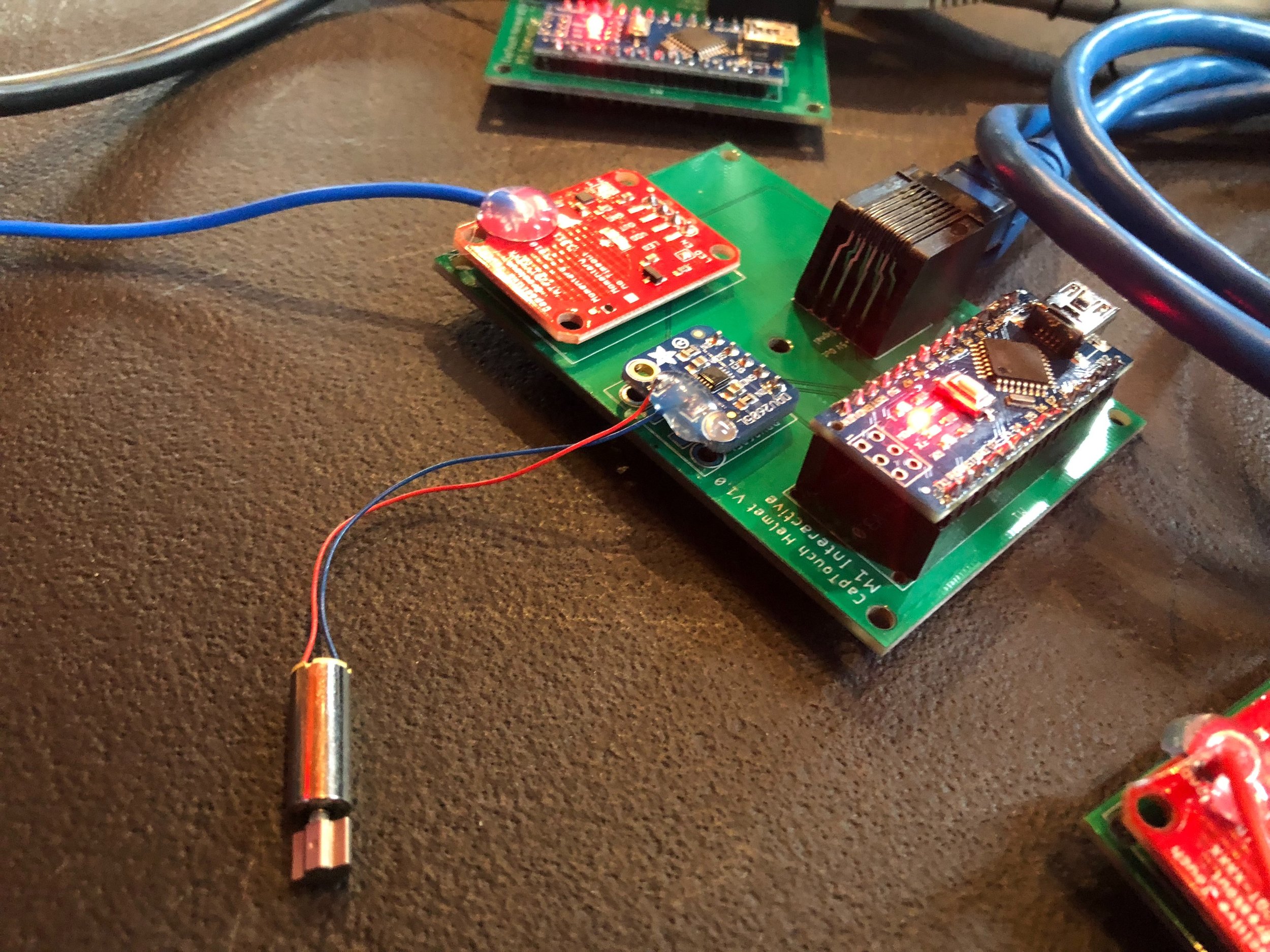
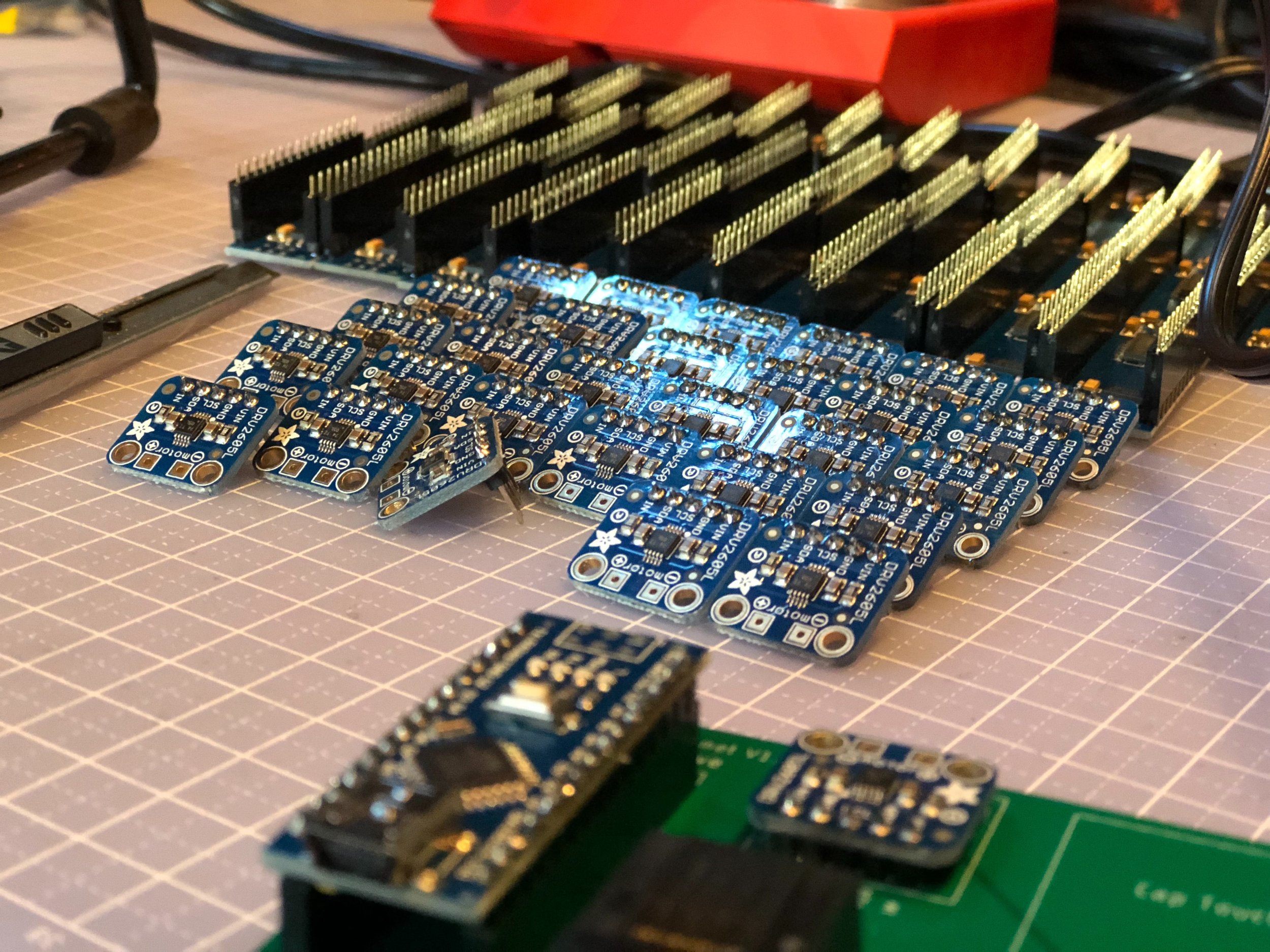
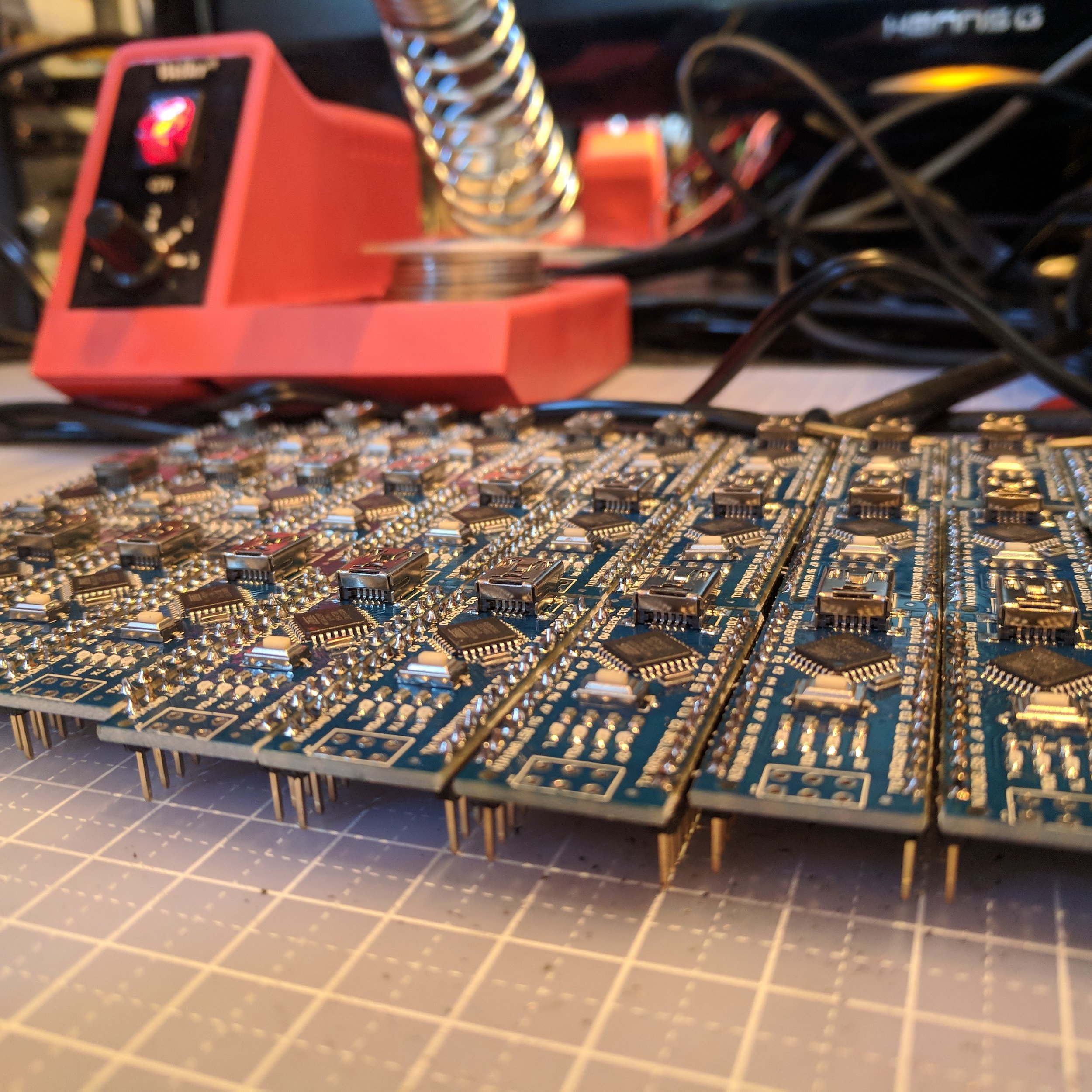

As an example, we were tasked with creating 32 individual pro football helmets that were touch activated with haptic feedback. These were used as triggers in a separate Unity app running on a PC connected to a large display. When a specific team helmet was touched, the small haptic feedback motor was activated, which vibrated the helmet slightly, while a triggered video relating to that helmet began playing.
For touch interactivity, we found the Sparkfun Capacitive Touch Breakout board to work very well for our need. We were able to line the inside of the helmets with conductive foil to create a larger touch area.
For haptic feedback we found cell phone vibration motors controlled by an Adafruit driver worked great.
In order to control both of these boards, and in order to communicate with each helmet individually it made sense to us to use Arduino Pro Minis all connected together to an Arduino Mega over Cat5 cable.
In order to accommodate all of these different devices we decided to create custom circuit boards to give us all the pins, power, and connectors we needed to make the install easier and more modular. Brian Dressel took on the task of creating the custom PCB, using Autodesk Eagle, after using it successfully on a few other custom PCB projects.
Authors: Mike Wszalek & Brian Dressel





